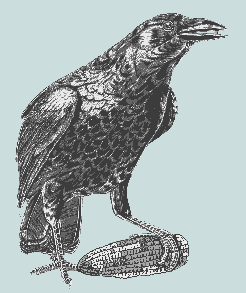

|
|
|
|
Each city was an independent state ruled by a merchant-king rather than the warrior-kings of neighbouring societies. Although the cities occasionally united to form a single Phoenician state these unions never lasted long. But the cities co-operated with each other and never fought among themselves.
In addition to shipping and selling cedar wood, the Phoenicians became highly skilled at working it. The Old Testament tells several stories of trading between the Phoenicians and Israelite kings. About 950 BC, Phoenicians provided the timber to build the palace of King Solomon and the famous temple in Jerusalem. Hiram, king of Tyre, provided skilled shipbuilders to construct a fleet for Solomon, and entered into a trading alliance with him.
According to the Old Testament the combined fleets of the two kings visited the land of the Queen of Sheba and brought back gold, silver, ivory, spices, precious stones, monkeys and peacocks.
The Phoenicians added to their reputation as navigators and traders by turning their cities into great manufacturing centres. They learned the techniques of neighbouring peoples, particularly the Egyptians, and adapted them for their own purpose. With great acumen, the Phoenicians imported from Europe and Africa materials such as ivory, gold, silver and silk, and worked them into furniture, jewellery, cloth and other saleable items for export to other Mediterranean countries. They also exported glassware, and cotton and linen cloth.
Sidon and Tyre were the main centres of the dyeing industry for which the Phoenicians were famous. Only they knew the secrets of how to produce the purple-red dye used for the robes of kings and nobles in many countries. They took the secretion from a particular seashell called murex, and from it obtained purple-toned dyes of varying shades. Because the murex secreted its dye only when dead and decaying, the smell of Phoenician cities was often far from pleasant.
Papyrus for books and documents was produced at Byblos, and from the name of this city, the Greeks derived the word biblion (book), from which came our words bible and bibliography. Besides adopting and improving other peoples' techniques, the Phoenicians were great communicators of information. As merchants and traders they kept accounts and records, and developed an alphabet of 22 consonants. This alphabet was developed between 1600 BC and 1100 BC; some of its symbols derived from Egyptian hieroglyphics. The Greek and Roman alphabets developed from the Phoenician system.
The Phoenicians had two main kinds of ships: 'round' ships for trading and 'long' ships for war. An Assyrian wall relief from Nineveh which tells the story of the flight from Tyre of Luli, king of Sidon and Tyre, in 701 BC, shows both kinds of vessels. The long ship had a vertical prow and the keel of the ship extended forward below the prow to form a protruding point for ramming enemy vessels. The stern was curved. The long ship had two banks of oars, and soldiers' shields lined the side of the ship, near the deck. The ship had a central mast from which a sail could be hoisted to supplement the energies of the oarsmen. The smaller, round ships, used for trading, had rounded prows and sterns. They had two banks of oars, but no sails. Up to about a dozen men are shown in each ship.
Later, the Phoenicians built triremes (galleys with three banks of oars). The sailors and ships of Phoenicia commanded great prestige for hundreds of years, and countries at war eagerly sought their aid. Phoenician ships acting as mercenaries helped the Persians in their war against Greece (499-179 BC). In the combined fleets of Persia and its allies (according to the Greek historian Herodotus) the king of Sidon ranked second in status to Xerxes, king of Persia.
Navigation |
||
|
|
Introduction | The Phoenicians |
|
|
Page 2 | Fortified Cities |
|
|
Page 3 | Dido and the ox hide |
|
|
Page 4 | A terrible religion |
|
|
Page 5 | Sacrifices to Tanit |